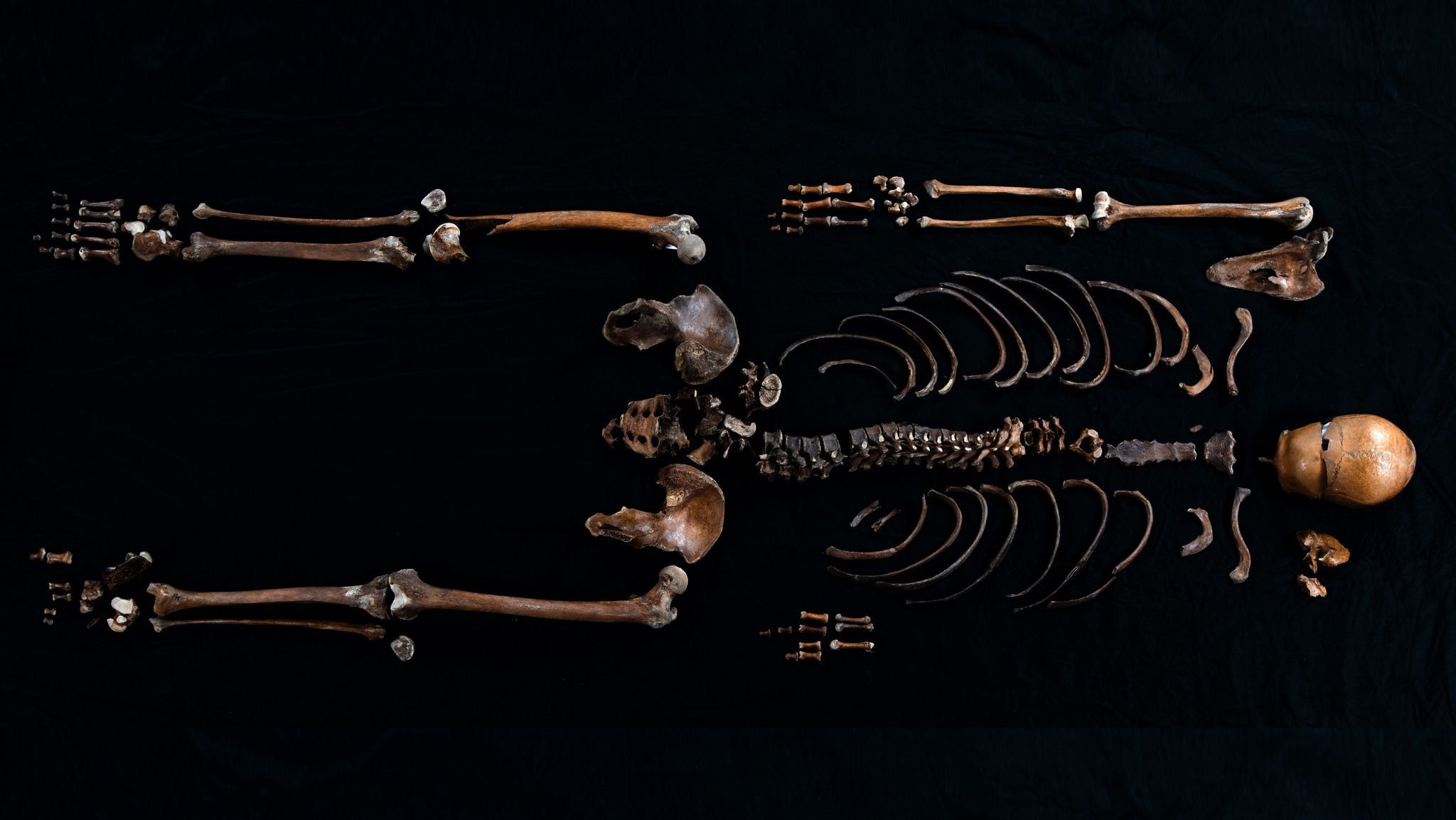

The fusion of history, archaeology, and genetics is cracking an 800-year-old Nordic mystery. Researchers from Norway used ancient DNA to corroborate a story from the Sverris Saga, where a man’s body was thrown into a well. Genetic analysis reveals what the man might have looked like and where his ancestors came from. The findings are described in a study published October 25 in the Cell Press journal iScience and the methods used could help scientists identify other historical figures.
“This is the first time that a person described in these historical texts has actually been found,” Michael D. Martin, a study co-author and genomicist at the Norwegian University of Science and Technology, said in a statement. “There are a lot of these medieval and ancient remains all around Europe, and they’re increasingly being studied using genomic methods.”
[Related: Stone circles unearthed in Norway mark ancient children’s graves.]
The Sverris Saga
The Old Norse Sverris Saga details the reign of King Sverre Sigurdsson and is an important source of knowledge about the region in the late 12th and early 13th Century CE. One of the passages describes a raid on Sverresborg Castle outside Trondheim in central Norway that occurred in 1197 CE. The writer mentions a dead man thrown into the well, but the reason why he was thrown into the well is much more sinister than just a run of the mill drowning. Historians suspect that the body was thrown in as a way to poison the local main water source.
In 1938, the bones believed to be that of the “Well-man” were found within the castle’s walls, but scientists at the time couldn’t do much beyond visual analysis. Today’s scientists have radiocarbon dating and advanced gene-sequencing technology that allowed them to craft a more solid picture of the Well-man’s identity.

Radiocarbon dating confirmed that the remains are roughly 900 years old. Research from 2014 and 2016 also confirmed that the body belonged to a male who was between 30 and 40 years old when he died.
“The text is not absolutely correct—what we have seen is that the reality is much more complex than the text,” study co-author and Norwegian Institute of Cultural Heritage Research archaeologist Anna Petersén said in a statement.
“We can corroborate what actually happened in a more neutral way,” study co-author Martin Rene Ellegaard of the Norwegian University of Science and Technology added.
A 900-year-old genome
In this new study, the team used samples of a tooth from the Well-man’s skeleton to sequence his genome. The team was then able to determine that he most likely had blue eyes and blond or light-brown hair. His ancestors were likely from the southernmost Norwegian county of present-day Vest-Agder.
To analyze this very old genome, they used a large pool of reference data from the genomes of modern-day Norwegians and other Eureopeans through a collaboration with Agnar Helgason at deCODE Genetics in Iceland.
“Most of the work that we do is reliant on having reference data,” Ellegaard said. “So the more ancient genomes that we sequence and the more modern individuals that we sequence, the better the analysis will be in the future.”
[Related: Some modern-day Scandinavians lack the ancestral diversity of Vikings.]
According to the team, the discovery of the remains of the Well-man and their connection to this passage in Sverris Saga gave them the opportunity to bring inferences based on ancient DNA into historical study.
“While we cannot prove that the remains recovered from the well inside the ruins of Sverresborg castle are those of the individual mentioned in Sverris Saga, the circumstantial evidence is consistent with this conclusion,” the authors wrote in the study.
Tooth powder
Even with all of this data and better research methods, there are still limitations to this technology. Sampling the Well-man’s genome required removing the outer surface from his tooth, to keep it from being contaminated with any DNA from those who handled it during excavation. The tooth also had to be ground into a powder and the sample can’t be used for further tests. The team were not able to obtain any data on pathogens that the Well-man may have been carrying at his time of death.
“It was a compromise between removing surface contamination of the people who have touched the tooth and then removing some of the possible pathogens … there are lots of ethical considerations,” said Ellegaard. “We need to consider what kind of tests we’re doing now because it will limit what we can do in the future.”

The team would also like to test samples from other historical figures, including Saint Olaf–the patron saint of Norway–who is believed to be buried near Trondheim Cathedral.
“So I think that if eventually his remains are uncovered, there could be some effort to describe him physically and trace his ancestry using genetic sequencing,” said Martin.
